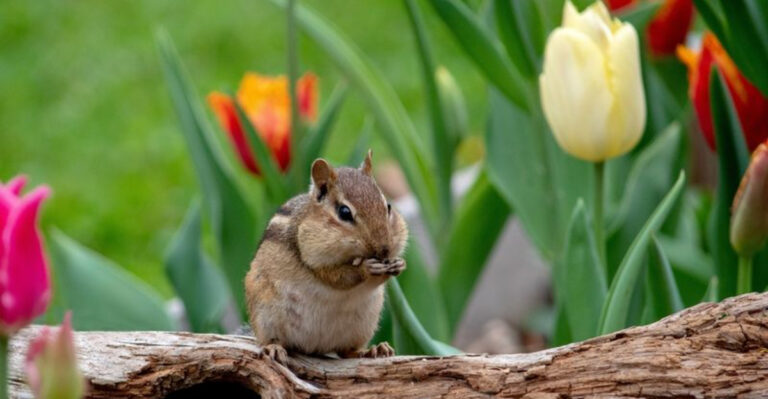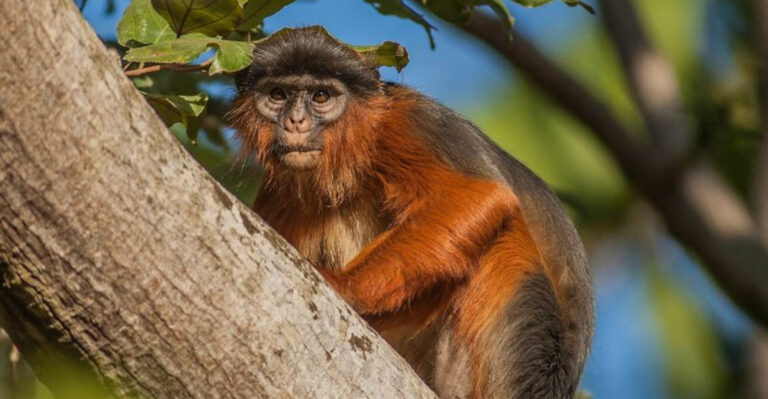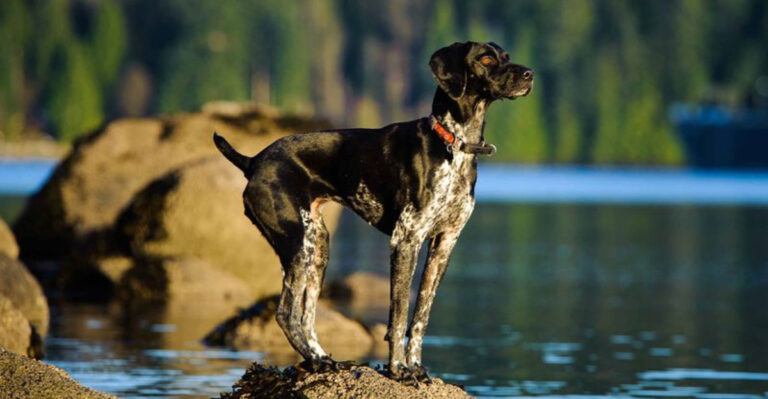Discover 14 Birds That Eat Snakes

When it comes to natural predators, birds might not be the first creatures that come to mind for hunting snakes.
Yet across the world, several feathered hunters have evolved specialized techniques to take down these slithering reptiles. From powerful talons to lightning-quick reflexes, these avian predators have what it takes to make snakes part of their regular diet.
1. Secretary Bird

Standing tall like an office worker with a quill behind its ear, this African bird doesn’t file paperwork – it stomps snakes to death! With legs nearly 4 feet long, secretary birds deliver powerful, precise kicks that can crush a serpent’s spine in seconds.
These birds have specialized scales on their legs that act like armor against snake bites. They’ll chase down their prey in the grasslands, then perform a deadly dance of stomps until dinner stops moving.
2. Red-Tailed Hawk
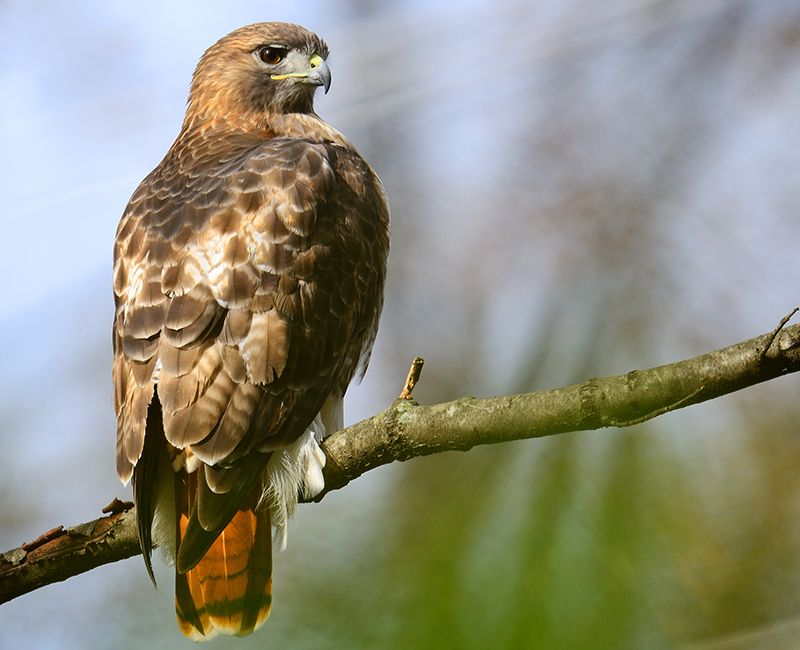
Soaring sentinels with rusty-red tails, these hawks spot snakes from hundreds of feet in the air. When a snake is detected, they dive at speeds up to 120 mph, grabbing the reptile with razor-sharp talons before it can react.
Their hunting technique involves pinning the snake’s head with one foot while the other grips the body. Even venomous species don’t stand a chance against this tactical approach. These widespread North American raptors help keep snake populations in check.
3. Laughing Falcon

Known as the “snake hawk” in Central America, this bird’s eerie, laughing call announces doom for serpents everywhere. With specialized facial feathers that protect against snake strikes, these falcons are immune to most venomous bites.
They’ve evolved to be snake specialists, with up to 75% of their diet consisting of these reptiles. After catching a snake, they’ll fly to a favorite perch to enjoy their meal, often starting with the head to prevent any last-minute escapes.
4. Roadrunner

Forget the cartoon character—real roadrunners are snake-slaying machines! These ground-dwelling birds can sprint up to 20 mph and leap 10 feet in the air while hunting. Their strategy? Grab a snake, whip it repeatedly against rocks until it’s subdued.
Even rattlesnakes aren’t safe from these desert speedsters. Roadrunners have been observed working in pairs—one distracting the snake while the other attacks from behind. Their remarkable heat tolerance lets them hunt when reptiles are active but other predators retreat.
5. Martial Eagle

Africa’s largest eagle doesn’t just eat snakes—it conquers them! With a wingspan reaching 8 feet and talons the size of a human hand, these aerial titans can take down venomous snakes twice their length.
Their hunting strategy combines raw power with surgical precision. Diving from extreme heights, they strike with enough force to break a snake’s spine instantly. These magnificent birds have been known to carry off black mambas and pythons, some of Africa’s most formidable serpents.
6. Great Blue Heron

Silent stalkers of wetlands, these statuesque birds don’t just fish—they’re also efficient snake hunters. With lightning-fast neck movements, a heron can spear a water snake before it even registers danger.
Their hunting technique involves absolute stillness followed by explosive action. Those dagger-like beaks easily penetrate scales, and their excellent depth perception ensures precise strikes. After catching a snake, they’ll often toss it in the air and reposition it to swallow headfirst.
7. Southern Ground Hornbill
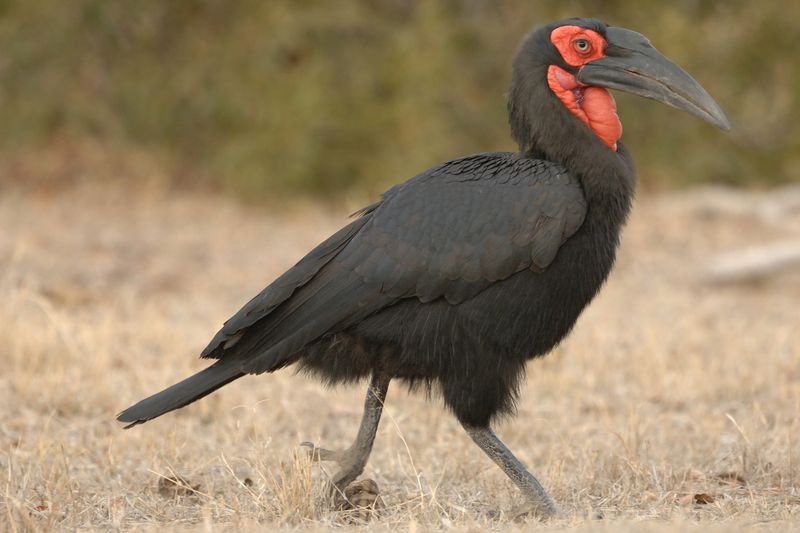
Walking through African savannas like feathered dinosaurs, these massive birds hunt snakes with methodical precision. With a beak strong enough to crack turtle shells, they make quick work of even the toughest serpents.
Ground hornbills hunt in family groups, often surrounding a snake before attacking. Their powerful legs allow them to jump backward, avoiding strikes while delivering devastating blows with their bills. Some indigenous cultures revere these birds as snake-killing protectors of villages.
8. Harris’s Hawk

Nicknamed “wolves of the sky,” these are the only raptors that hunt in coordinated packs. Working together, they flush out, surround, and overwhelm snakes that would be too dangerous for a single bird.
Their social hunting strategy is remarkably sophisticated. Some hawks will distract a snake while others attack from behind. They’ve even been observed using relay tactics, taking turns chasing a tired snake. Native to the southwestern United States and Latin America, these chestnut-colored hunters are snake control experts.
9. Marabou Stork
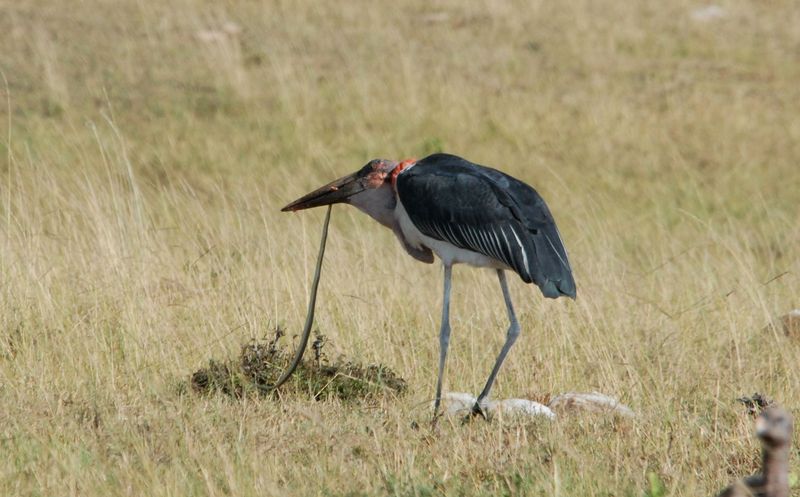
Looking like undertakers with their hunched posture and bald heads, these massive African birds aren’t picky eaters—and snakes are definitely on the menu. Standing up to 5 feet tall with a 10-foot wingspan, they easily overpower most serpents.
Their massive bills can crush a snake’s vertebrae with one snap. Though they often scavenge, they’re opportunistic hunters that will happily gobble up any snake they encounter. Their bald heads—an adaptation for hygiene when feeding on carrion—also help prevent snake bites during struggles.
10. Golden Eagle
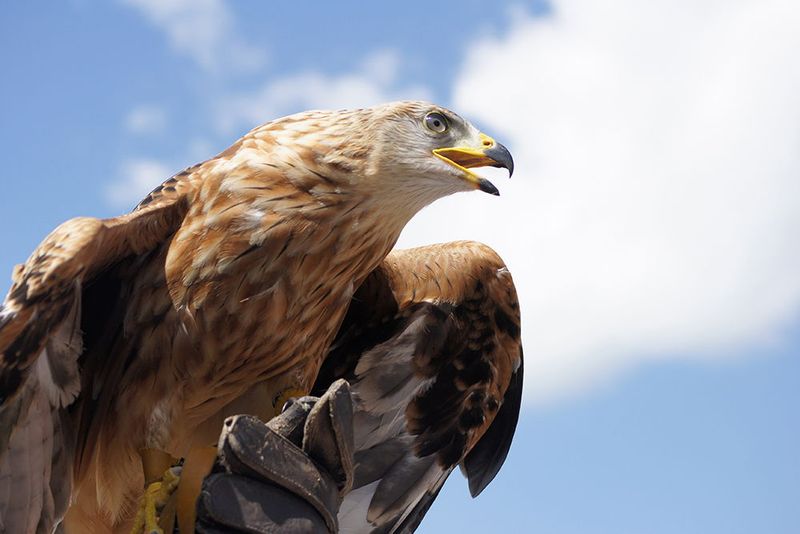
Masters of the mountains, these majestic hunters can spot a snake from nearly a mile away. With diving speeds reaching 150 mph, snakes rarely have time to react before powerful talons grip them with crushing force.
Their hunting technique combines aerial surveillance with explosive attacks. Golden eagles have been documented taking down rattlesnakes and vipers across North America and Eurasia. After capture, they’ll often carry snakes to their nesting areas, using the reptiles’ bones to reinforce their massive nests.
11. Crane
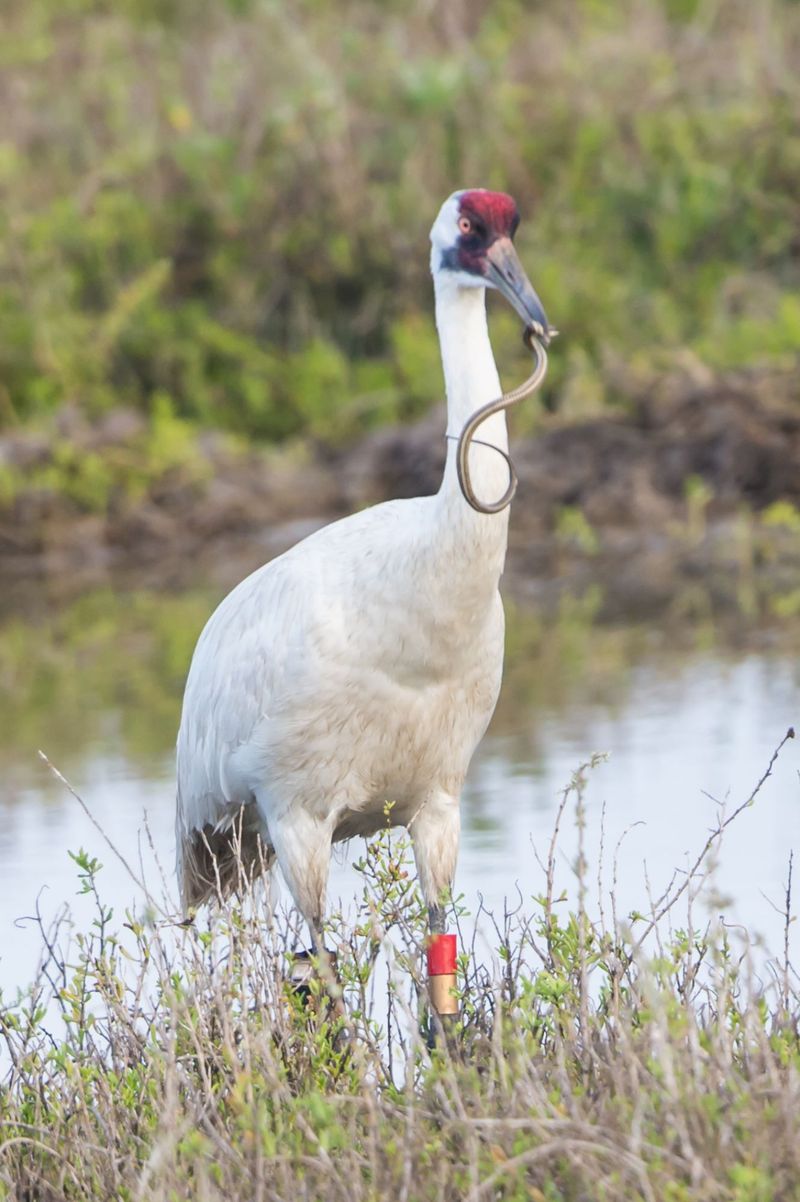
Elegant dancers of the wetlands by appearance, cranes transform into precise snake-killing machines when hunting. Their spear-like bills can strike with surgical accuracy, often targeting a snake’s head to neutralize the threat instantly.
Many crane species worldwide incorporate snakes into their diets. Their excellent vision allows them to spot partially hidden serpents in tall grass or shallow water. Some species, like the Sarus crane, stand nearly 6 feet tall, giving them a significant advantage when battling even large snakes.
12. Seriema
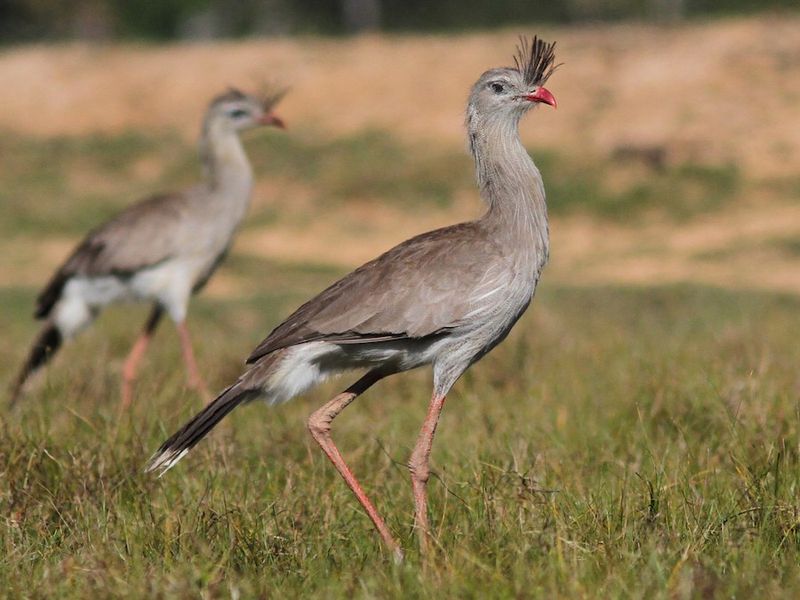
South America’s answer to the roadrunner, these long-legged birds are snake-smashing specialists. When they catch a snake, they’ll repeatedly whip it against rocks or hard ground with violent head tosses until it’s thoroughly tenderized.
Their method is both brutal and effective. Seriemas will sometimes carry snakes to specific “anvil stones” they use regularly for prey processing. With their excellent running speed and ability to leap into low branches, they can pursue snakes across varied terrain while avoiding retaliatory strikes.
13. Black-Breasted Buzzard

Australian problem-solvers with a unique hunting trick—they use tools! These clever birds pick up rocks with their beaks and drop them to crack open eggs, but they apply similar tactics when hunting snakes.
They’ll drop stones or sticks to distract or injure a snake before swooping in for the kill. Their broad wings create a shadow that momentarily confuses serpents, giving the bird an opening to attack. Despite Australia’s notorious venomous snake population, these buzzards have evolved techniques to safely dispatch even the deadliest species.
14. Caracara
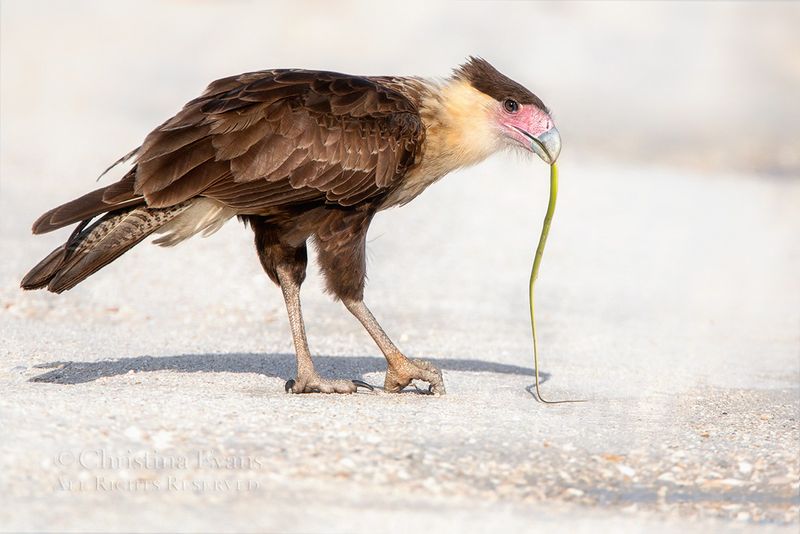
Often called “nature’s opportunists,” these falcon relatives combine intelligence with aggression when hunting snakes. With their partially bare faces and powerful beaks, they’re well-equipped to handle serpentine struggles without risking injury.
Caracaras use a fascinating hunting strategy—they’ll often harass a snake until it strikes repeatedly, tiring itself out. Once the reptile is exhausted, the bird moves in for the kill. Found throughout the Americas, different caracara species have adapted to hunt various snake types, from small grass snakes to substantial rattlers.


